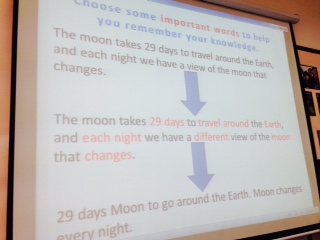How might students be encouraged to inquire about the world around them and follow up on their own questions?
My students are learning the importance of asking questions. We explored what makes up a thick or thin question. We started with their own wonderings as the starting point and asked: "Which questions make you think more? think less?" By comparing the types of questions and answers, students were able to conclude the following:
Thick Questions:
- Hard to answer
- Takes time to think about
- There may be many answers to the same question and oftentimes there may never even be an answer
- Cannot be answered with just a "yes" or "no"
Thin Questions
- Fast and easy to answer
- Answers can usually be found quite easily and right away
- There is usually only one answer
- Can usually be answered with a "yes" or "no"
Wonder
Students sorted their questions into thin or thick questions that were connected to our unit or not connected to our unit. Some felt their questions were really thin (Who invented the toilet?) so they placed their Post-its near the top, others felt they weren't so thin, but still thin nonetheless (What makes snow?) so they decided to place it near the middle. Others thought their questions were really thick (Is God real?) so they placed those on the bottom.
Student wonderings included:
- Why do we have time? - Dae Heon
- How does time control the world? - Theresa
- I wonder why time can see everything. - Ben
- How old is the Great Wall of China? - Isabella
- When do turtles die? - Minh Thu & Gabby
- Who invented war? - Dan
- How does the Earth move? - Aqif
Investigate
Students and I collected their research using a website called Blendspace. This allows for personalization and differentiation of resources for each student to investigate their inquiries.
With the iPads, each student can scan their own QR code, which takes them to their own Blendspace of inquiry resources.
Making and Sharing Conclusions
Students then decide when to conclude their investigations and take part in sharing their findings with their classmates.
This process has allowed my students to pay more attention to their own thinking, while giving them the tools to research what they're wondering and interested in.


























































